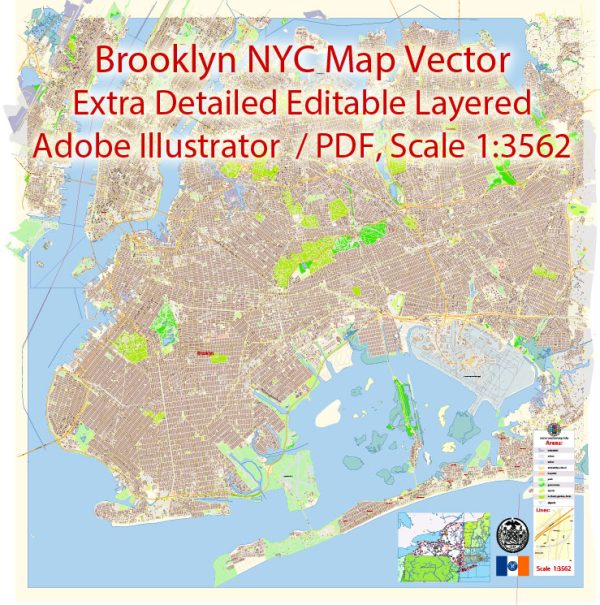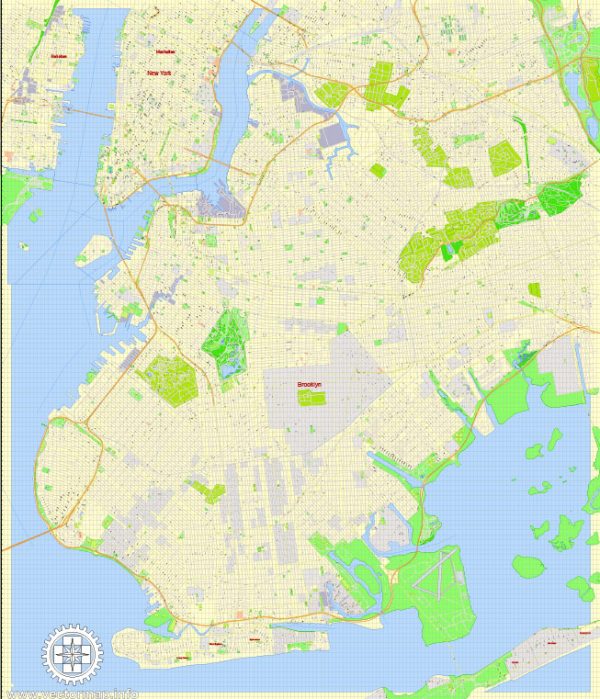The history of urban development in Brooklyn, New York, is a fascinating and complex story that reflects the broader evolution of American cities. Brooklyn has undergone significant transformations, from its early days as a rural settlement to its current status as a thriving borough within New York City. Here’s a brief overview of the key stages in the urban development of Brooklyn:
- Early Settlement and Dutch Influence:
- The Dutch settled in what is now Brooklyn in the early 17th century, and the area was known as “Breukelen.” The Dutch influence can still be seen in place names, such as “Flatbush” and “Gowanus.”
- American Revolution and Growth:
- Brooklyn played a significant role in the American Revolution, with the Battle of Long Island taking place in 1776. After the war, Brooklyn began to grow, with small villages and farms dotting the landscape.
- 19th Century Expansion:
- The development of steam ferry services connecting Brooklyn to Manhattan in the early 19th century spurred rapid growth. Brooklyn was incorporated as a city in 1834.
- The construction of the Erie Canal and the establishment of industries along the waterfront contributed to its economic development.
- Consolidation with New York City:
- In 1898, Brooklyn, along with other surrounding cities and areas, was consolidated into Greater New York City, becoming one of the boroughs. This event marked a significant change in the city’s status and governance.
- Urban Growth and Immigration:
- The late 19th and early 20th centuries saw a wave of immigration, with many European and later, Caribbean, Asian, and Latin American immigrants settling in Brooklyn. This diverse population contributed to the borough’s cultural richness.
- Suburbanization and Post-War Changes:
- After World War II, suburbanization trends led to population declines in some parts of Brooklyn. The construction of highways and the development of Levittown-style housing also impacted the borough.
- Decline and Revitalization:
- The 1960s and 1970s were marked by economic decline, high crime rates, and urban decay in many parts of Brooklyn. However, community efforts, investments, and urban renewal projects contributed to revitalization in the following decades.
- Gentrification and Modern Brooklyn:
- Starting in the late 20th century and continuing into the 21st century, Brooklyn has experienced gentrification in many neighborhoods. Areas like Williamsburg, DUMBO, and Park Slope have undergone significant transformation, with the influx of young professionals, artists, and new businesses.
- Cultural and Economic Hub:
- Brooklyn is now known for its vibrant cultural scene, with numerous museums, theaters, and a thriving culinary culture. It has also become a hub for tech startups and creative industries.
- Challenges and Opportunities:
- Despite its growth and development, Brooklyn faces ongoing challenges related to affordable housing, income inequality, and infrastructure needs. These issues are being addressed through various community and government initiatives.
The history of urban development in Brooklyn reflects the broader narrative of American cities, with periods of growth, decline, and revitalization. Today, Brooklyn remains a dynamic and diverse part of New York City, with a rich history and a promising future.



 Author: Kirill Shrayber, Ph.D.
Author: Kirill Shrayber, Ph.D.